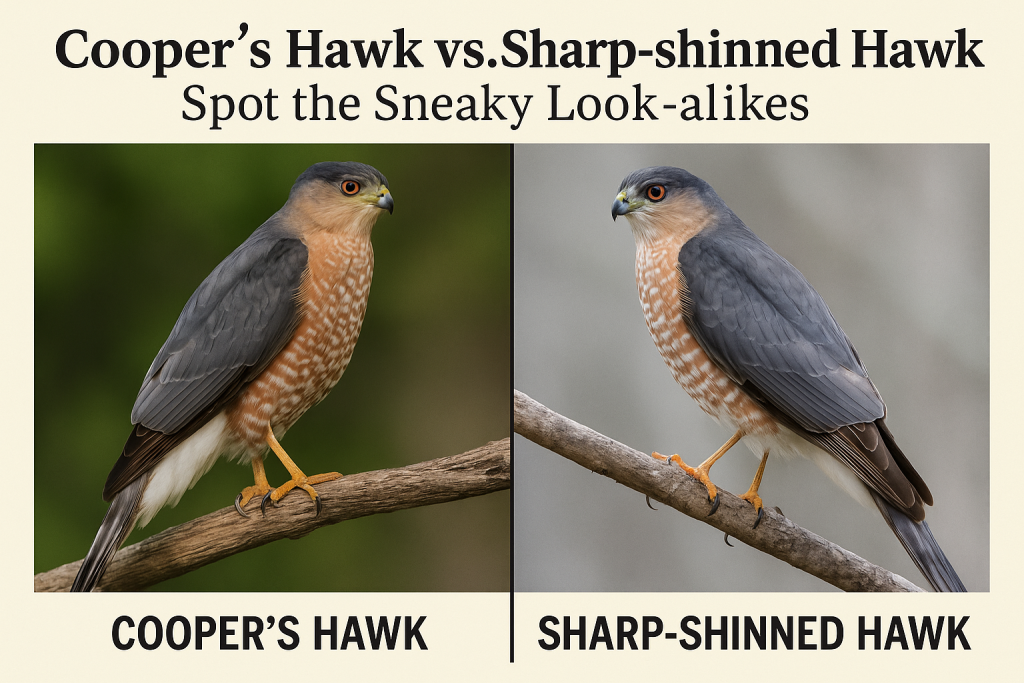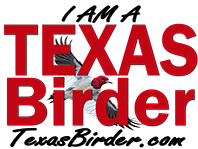
Feathered doppelgängers.
Cooper’s Hawk vs. Sharp-shinned Hawk: Spot the Sneaky Look-alikes
| Field Mark | Cooper’s Hawk | Sharp-shinned Hawk |
|---|---|---|
| Size | Bigger (crow-sized), 14–20 in | Smaller (jay-sized), 9–13 in |
| Head | Large, blocky head sticks out past wings in flight | Small, round head barely peeks past wings |
| Tail Shape | Rounded tip with longer outer feathers (like a spoon) | Squared or notched tip, all tail feathers about same length |
| Tail Length | Long tail (often appears too long for the body) | Shorter tail in proportion to body |
| Neck | Slight neck visible – gives a “shouldered” look | No visible neck – head appears to sit directly on shoulders |
| Flight Style | Steady wingbeats + long glides | Quick, snappy wingbeats + shorter glides |
| Legs | Thicker, more robust legs | Pencil-thin legs |
| Eye Position | Eyes appear more forward-facing | Eyes appear more centered on the head |
| Call | Slower, lower “cak-cak-cak” | Higher-pitched, rapid “kik-kik-kik” |
Narrative: Cooper’s vs. Sharp-shinned
The Cooper’s Hawk is slightly larger, with a longer tail and a head that sticks out in flight. It flies in a smooth glide.
The Sharp-shinned Hawk is smaller with a squared-off tail, snappy wingbeats, and very thin legs. It zips through the trees and shrubs in rapid motion.
When perched, check that head: Cooper’s shows a chunky, blocky head with a hint of neck, while Sharp-shinned looks like barely has a neck at all. And if you’re lucky enough to catch one in flight, the tail shape and wingbeats are your best clues — Cooper’s = smooth operator, Sharpie = twitchy.

More Stories
What Are Feathered Doppelgangers?
Ruby-throated Hummingbird Vs. Black-chinned Hummingbird IDs
Downey vs. Hairy Woodpeckers IDs